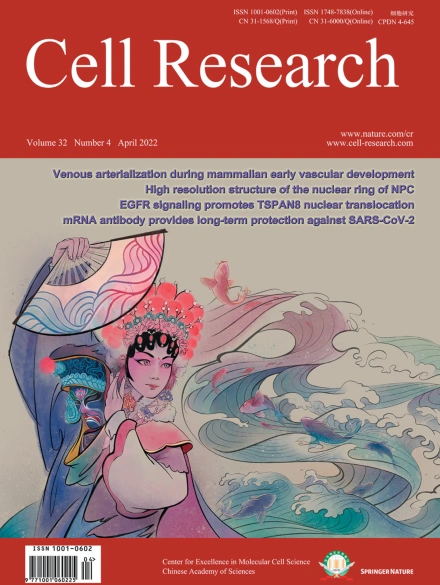
Advanced Search
Submit Manuscript
Advanced Search
Submit Manuscript
Volume 32, No 4, Apr 2022
ISSN: 1001-0602
EISSN: 1748-7838 2018
impact factor 17.848*
(Clarivate Analytics, 2019)
Volume 32 Issue 4, April 2022: 407-410 |
Spontaneous necroptosis and autoinflammation are blocked by an inhibitory phosphorylation on MLKL during neonatal development
Xinxin Zhu1,2,3 , Na Yang2,3 , Yu Yang2,3 , Feiyang Yuan1,2,3 , Dandan Yu1,3 , Yu Zhang1,2,3 , Zhaoqian Shu1,3 , Ning Nan1,2,3 , Hong Hu1 , Xiaoyan Liu1 , She Chen4,5 , Liming Sun2,3,* , Huayi Wang1,*
1School of Life Science and Technology, ShanghaiTech University, Shanghai, ChinaDear Editor,
Necroptosis, a form of caspase-independent cell death, is tightly regulated to maintain tissue homeostasis. The execution of necroptosis depends on receptor interacting protein kinase 3 (RIP3)-activated mixed lineage kinase domain-like protein (MLKL). MLKL is phosphorylated by RIP3, which releases MLKL autoinhibition and drives its self-oligomerization.1,2,3 Oligomerized MLKL translocates to cellular membranes, where it disrupts membrane integrity causing necroptotic cell death.2,3
https://doi.org/10.1038/s41422-021-00583-w